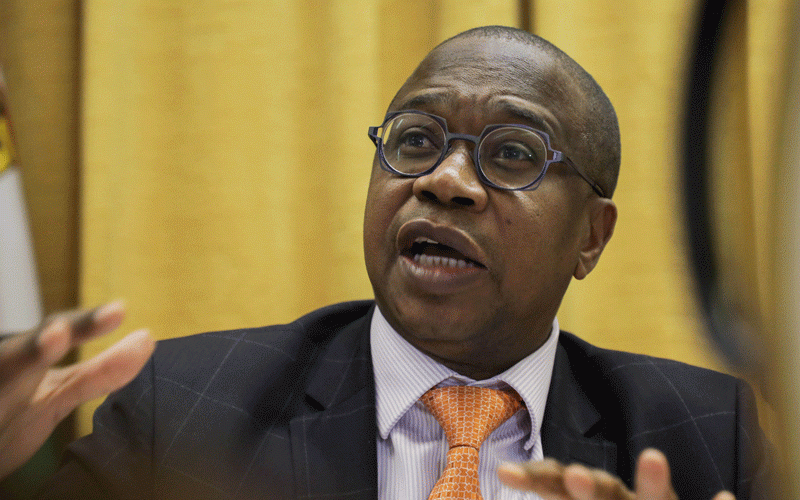
The outbreak of the coronavirus (COVID-19) in the last few weeks has put a number of professions to the test, including journalism.
By Carolyne Lunga
As more individuals move away from their daily places of work to working from home as part of self-isolation and social distancing, journalists are confronted with a number of challenges.
Firstly, how to continue to report on the coronavirus when they cannot come close to the affected and also when they themselves are self-isolating.
Secondly, how to provide accurate and detailed information on the coronavirus, which even scientists are grappling to understand as the disease is spreading rapidly.
Thirdly, which story angles to take since everyone and everything about society is affected by the virus in different ways.
For example, rising deaths and infections, the closure of educational and recreational facilities, plunging of markets, closure of businesses, trials for new vaccines, massive job losses among others are issues needing attention.
Fourthly, journalists are challenged at the level of truth-telling in the midst of a flood of disinformation and views coming from different corners of the world regarding Covid-19.
- Chamisa under fire over US$120K donation
- Mavhunga puts DeMbare into Chibuku quarterfinals
- Pension funds bet on Cabora Bassa oilfields
- Councils defy govt fire tender directive
Keep Reading
Social media platforms such as Twitter, Facebook and WhatsApp among others are being used by users to spread disinformation.
With these challenges and others, journalists have been playing an important role so that the public can understand the pandemic.
Some great coverage on COVID-19 has been seen on various global and local media platforms as this article will discuss.
It can also be seen how journalists are employing a wide-range of tools and strategies in their reportage and working overtime so as to keep the public informed.
Not all the reporting has been good, as some is sensational, lacks depth, neglects local realities and reproduces rumours circulating online.
Interviews with journalists and online observations have shown that when it comes to reporting a global pandemic, technological tools such as the internet, tablets and smartphones are important for news gathering and dissemination.
To continue reporting while working from home, some journalists have set up mini studios in their homes and carried out interviews with news sources in various places of the world via Skype.
WhatsApp and Facebook are also being used to allow for discussion with users in various parts of the world as they relay information about what is happening in their part of the world.
For some journalists, it has been critical for them to go to the places where there are people affected, such as hospitals, so as to tell stories from their vantage point.
These journalists maintained social distancing, interviewed and filmed experts.
Some have been going to press conferences called by heads of state and senior government officials so as to get information directly from the source and also ask questions about issues that they are observing and getting questions from citizens.
A close observation of major global players such as BBC, Sky News, CNN is evidence of the above.
Reporters from these and other media organisations have been going to public places including parks, supermarkets etc, so as to tell stories on whether citizens are social-distancing or not.
Videos by Sky News from hospitals with people affected are providing an insider view about the effects of the pandemic.
Interviews with doctors and nurses and footage showing affected individuals helped in telling emotional stories designed to make the rest of the citizens be aware of the suffering of those infected with the coronavirus are also being broadcast.
Footage from recovering patients shared by their family members also helps to cement the narrative of the pain and suffering of those infected with the virus.
In order to provide accurate and detailed information, journalists are mostly relying on official sources from the World Health Organisation, government websites and also carrying out interviews with experts in various fields to explain on the coronavirus and why it is important for citizens to follow advice on staying at home, regular washing of hands and disinfecting surfaces.
Insofar as being credible is concerned, journalists are employing tools that allow them to tell data-driven stories.
The coronavirus is creating a tsunami of data and journalists are using statistics and numbers to visualise how the world is being affected, in terms of the number of deaths per area over a specific period of time among other issues.
Different media organisations, including BBC, Sky News, eNCA are telling stories through the usage of images and infographics combined with short and long articles.
These stories are being told in ways that allow for easy understanding and for citizens to interact with the data and make their own understandings.
Some news organisations have created web pages, sites and newsletters devoted to the coronavirus among them Buzzfeed, BBC and Sky News among others.
Regarding the challenge of which angles to focus on, journalists have been trying to put a wide range of issues onto the public arena. Stories about how governments are either prepared or not prepared to fight Covid 19, trials in labs for a new vaccine, religious leaders’ compliance or non-compliance to social distancing have been covered in various local and global media.
Local media focusing on their areas told stories from the vantage point of ordinary citizens in those areas.
Water-shortage, poverty, effects on small businesses and self-employed, children among others as evidenced by papers such as NewsDay, Chronicle, Times of Swaziland and others.
The challenge of disinformation continues to be a huge threat to journalistic efforts in upholding ethical principles of journalism such as truth, verification and accuracy. There has been a lot of information circulating about how China, South Korea, Zimbabwe among others discovered new vaccines.
For example: “China officially announced, just a few hours ago, the success of the Zimbabwean serum that Dr. Andrew Mutapi presented to the Chinese ministry of Health to treat the coronavirus, which has proven 100% effective on more than seven cases that have been cured …”
This message is being circulated on WhatsApp with the intention to mislead.
Another one titled “Trump announces coronavirus cure” has also been doing the rounds on WhatsApp.
A viral hoax showing an image of a lion in Johannesburg in 2016, has also been circulating on Facebook, Twitter and several online news sites under the headline “Putin uses lions in Russia coronavirus lockdown”, claiming that lions have been released to force citizens to stay indoors during a coronavirus lockdown.
There are many other hoaxes claiming that cocaine and bleach are being used to kill coronavirus in India and how garlic water is a cure for the virus in some states in Africa.
A deluge of rumours online which spread fast poses a huge threat to credible journalism.
Journalists are thus confronted with the difficulty of putting more credible news out there about COVID-19.
In a context of economic decline and financial hardship, some newsrooms are relying on other websites for their news, which is resulting in thin coverage lacking in detail and failing to interrogate local realities, such as poverty, lack of water, electricity and food which make COVID-19 a double tragedy on an already suffering populace due to various political and economic reasons.
Some media houses are employing sensationalism in their coverage by focusing on celebrities who have been infected by the coronavirus and also creating misleading headlines that instil fear and panic among readers and this can be hugely problematic in a context in which citizens are uneasy, fearful and uncertain about the future.
As problems associated with the spread of the coronavirus can be seen across the world, journalism plays a crucial role in providing credible, accurate and truthful information so that citizens can make informed decisions.
This time calls for people with vested interests in journalism to think about courses and new approaches to cover a global pandemic such as the coronavirus if they do not already have them.
Carolyne M. Lunga is a PhD researcher and Graduate Teaching Assistant for International News at City, University of London.











